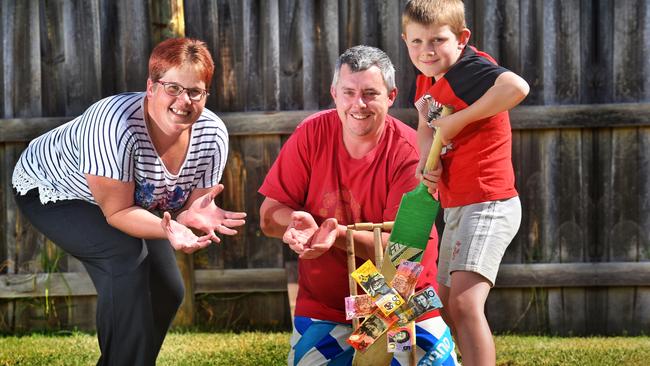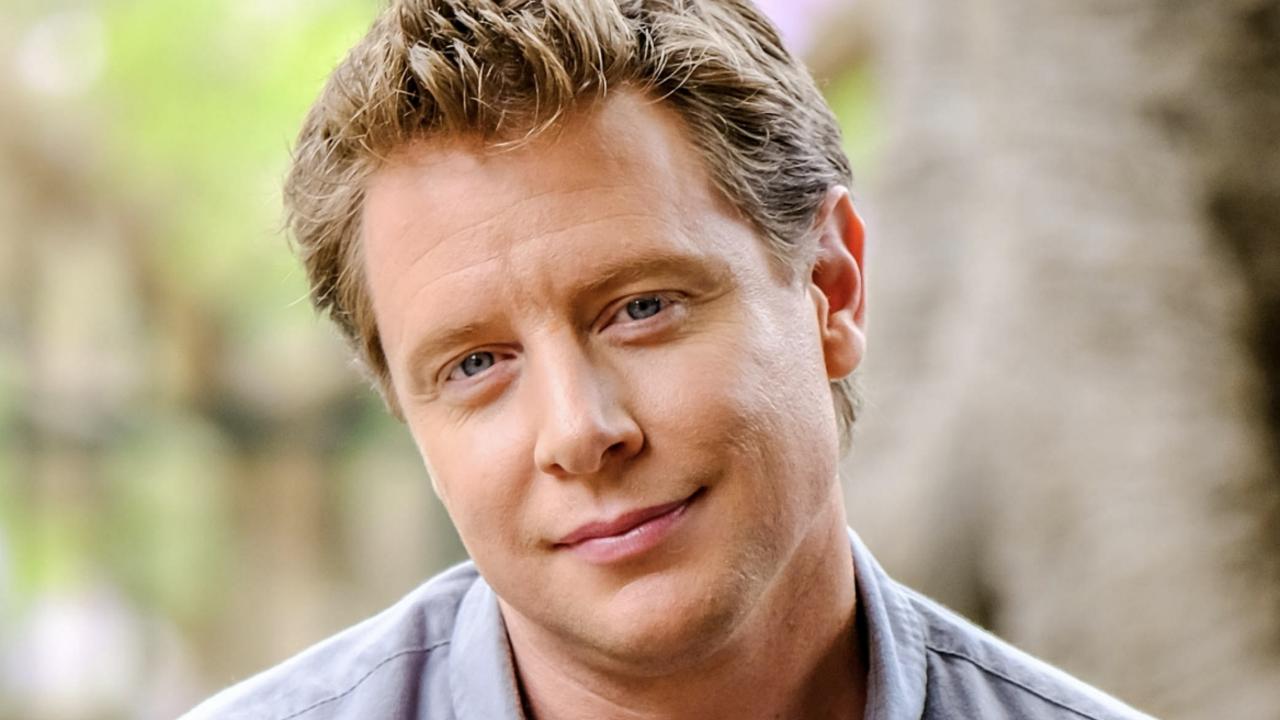How to comfortably retire — you don’t need $1m to live well
FOR week 4 of the Barefoot Date Nights Challenge, I want you to go out to a steak restaurant — because we’re going to slay some sacred retirement cows, writes Barefoot Investor.

Barefoot Investor
Don't miss out on the headlines from Barefoot Investor. Followed categories will be added to My News.
FOR week 4 of the Barefoot Date Nights Challenge, I want you to go out to a steak restaurant — because we’re going to slay some sacred retirement cows, put ’em on the grill and have a feast! This week I’m going to lay out for you what I call the “Donald Bradman Retirement Strategy”. It’s called this because it’s built on the expectation that you’ll still be confidently at the crease when you’re 100 — not out! Strap your pads on. Grab your bat. It’s time to take a swing at the biggest fear people have.
THE Donald Bradman Retirement Strategy — or why you don’t need $1 million to retire — will upset of lot of financial planners who perpetuate the myth about how much you really need.
“Two million might not even be enough,” wrote a financial planner in the newspaper recently.
Stop!
If you’re in your 50s these retirement figures will likely scare the life out of you. After all, the average Aussie couple retires with $200,000 in super.
Let me be clear: you do not need a million dollars in super to retire.
A million dollars is way above what you actually need. At a minimum, you need a paid-off home, plus:
Couples: $250,000 in super
Singles: $170,000 in super.
Make this your “retirement number”. To be clear, this is the number you need to nail before you even think about retiring — and that’s in addition to owning your own home outright.
Hang on, what if you don’t have $250,000 before you retire?
You keep working.
Hang on, what if you have more than $250,000 saved up in super?
You keep smiling. Barefoot rule number 3445 states: “When it comes to your retirement, you will always be better off having more money in super. Always.”
Here’s you: “I think old Barefoot needs a pedicure! I mean, really, what sort of retirement will $250,000 get us? We don’t want to dine out on dog food!”
Here’s me: “If you follow my strategy to the letter, you’re going to have a very comfortable retirement.”
Here’s you (crossing your arms): “Your idea of retirement might be a little different to ours, young man.”
Here’s me: “OK, well let me paint you a picture of what a paid-off home and $250,000 (or $170,000 for singles) buys you in terms of lifestyle in retirement, old boy.”
THE DATE NIGHT MENU AND STRATEGY
Here’s what your life could look like. You will:
ENJOY a three-week trip to Noosa each year with your friends, staying in a nice hotel.
REGULARLY eat out at nice restaurants, and you choose whatever you want on the menu.
ENJOY a nice glass of wine (or two) as the sun sets each night.
OWN a near-new Toyota Corolla.
REGULARLY buy nice new clothes.
CONTINUE going to the same hairdresser you always went to while you were working (they’re an absolute magician at hiding the grey, and — let’s be honest — they’ve got a bit more work to do these days).
KEEP track of the footy scores on your iPad … and download the occasional dirty movie.
ENJOY fishing with the latest gear. Your wife goes to pilates once a week, and you both go to art class and learn how to draw nudes.
BUY your grandkids nice presents, without spoiling them. More importantly, you buy an annual zoo pass and take them out on day trips. Lots of snaps on the iPhone for the weekly battle of “my grandkids are cuter than yours” at the golf club.
HAVE enough dough to replace your drab kitchen and bathroom when you retire (you’ll be spending a lot more time in the toilet, old boy … drip, drip, drip).
HAVE top-quality private health insurance so you can have your choice of doctor and hospital.
HAVE emergency money socked away so you don’t have to worry about day-to-day bills — and you know your long-term income will never run out.
Again, just to be clear, that’s what you can look forward to if you retire with a paid-off home and $250,000 (or $170,000 for singles), if you follow my Donald Bradman Retirement Strategy.
Sound good?
Well, you’ll be pleased to know I haven’t plucked any of this out of thin air.
What I’ve just described (minus the dirty movies) is what the stodgy Association of Superannuation Funds of Australia has calculated as being achievable for retirees living a “comfortable retirement”.
So how much dough does ASFA calculate that this comfortable retirement will cost?
For couples $59,000 a year, $43,000 annually for singles.
At this point you’re thinking, “Does this plan of yours involve me holding up convenience stores with cricket bats? Because I can’t see how my $250,000 will afford me a $59,000-per-year lifestyle.”
Let’s head to the crease.
RULE 1: You must have the banker off your back
This strategy only works if you retire debt-free ... as in no mortgage.
Even better, the age pension doesn’t take into account the value of your family home. (Which means that, theoretically, James Packer could cash in his chips when he’s older, buy a $7 billion home and collect the age pension.)
You need to own your own home — debt free — before you retire.
RULE 2: Nail your number
You can’t retire until you’ve nailed your retirement number as a minimum (more money is better): $250,000 in super for couples and $170,000 for singles.
Hang on, what’s so special about these numbers?
This is the maximum dollar amount of assets (excluding your family home) that you can have and still get close to the maximum rate of age pension.
At the time of writing, the maximum rate of age pension is $34,252.40 per year for couples and $22,721.40 for singles. And it will get you 60 per cent of the way towards your comfortable retirement number on its own.
Think of this as your safety net: it’s guaranteed by the government, it’s indexed twice a year to keep up with inflation and it will be paid until the day you die.
RULE 3: Never, ever retire
It’s said that the two most dangerous years of your life are the year you’re born and the year you retire. You’ve made it through the first one, so let’s talk about the second.
The golden rule of retirement is ... keep working.
That doesn’t mean you have to keep your existing job (especially if you’re a tiler with dodgy knees).
You can do something less labour intensive — just a day or so a week, and it doesn’t need to be every week.
Work is good for you: retirees who do some kind of part-time work are found to be the happiest and the least likely to suffer depression.
Why not use the skills you’ve honed over your career to do some useful work?
I meet so many Uber drivers who are well-to-do retirees who don’t need the money — they just like chatting to people and earning their keep at the same time.
And better yet, if you do work, the government will bend over backwards to help you.
Once you reach pension age, you’ll not only be able to draw a tax- free pension from your super, but in addition a couple can earn up to $28,974 each without paying a cent of income tax (singles can earn $32,279 per year).
Yet what if your adviser says, “You’re a winner, you don’t have to work another day in your life?”
Barefoot says: “Work anyway, even if it’s a day a week.”
The biggest mistake you’ll make with your retirement is to give up working.
Let’s take a final look at the retirement scoreboard, after you’ve applied all three rules:
You’ve paid off your home.
You’re getting the age pension of $34,252.40 (per couple) a year, indexed for life. And you’ve got $250,000 in super.
(Legally, you are required to draw down 5 per cent of your balance, or $12,500 of tax-free income per year.)
You and your partner each work just one day a week to bring in a combined $20,000 a year, completely tax free.
Total: $66 752 per year
That’s almost $8000 more than you need for your comfortable retirement! Ker-ching!
PLANNING FOR THE FUTURE
CROYDON couple Karyn, 36, and Phil Campbell, 45, run the poultry sections in two IGA supermarkets and have no imminent plan to retire.
But with two sons to think of, the family aren’t playing chicken with their money and are planning for their future.
“It would be nice to have the house paid off and to give the kids something when we retire, like a lump sum to put towards their own houses,” Mrs Campbell said.
“We don’t want them to struggle and we want to teach them to be mindful about money.”
Mrs Campbell has been reading Barefoot Investor for a few years, but wished she found him earlier.
“At one point I was transferring funds around four or five credit cards but, as Scott says, credit cards are evil,” Mrs Campbell said.
The family have since rid themselves of plastic money and are working towards a debt-free retirement.
Reader offer: Buy The Barefoot Investor: the only money guide you’ll ever need for $27.95 including delivery. Order online at heraldsun.com.au/shop or call 1300 306 107. For mail order, post a cheque/money order to: Herald Sun Shop, PO Box 14730, Melbourne, Vic, 8001
Originally published as How to comfortably retire — you don’t need $1m to live well


